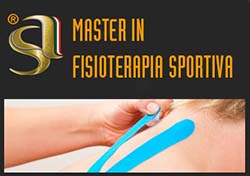La riabilitazione post-chirurgica del nervo ulnare
Sport and Anatomy Fascicolo 3, 2019, pagine: 106-110
DOI | @ Pisa University Press 2022
Pubblicato: 15 April 2022
L’intero articolo è disponibile
Riassunto
La funzionalità del nervo ulnare è fondamentale nell’arto superiore per l’esecuzione delle prese di forza. Gli autori riportano un case report di una paziente di sesso femminile con lesione da taglio del nervo ulnare avvenuta a seguito di un incidente domestico. La paziente è stata trattata chirurgicamente con intervento di neuroraffia termino-terminale, la lesione si trovava a circa 3 cm prossimalmente al canale di Guyon. Il nervo ulnare ha particolare importanza nella esecuzione del power grip, realizzando la forza e la tenuta con le azioni differenziate degli interossei e la stabilità di IV e V dito nella presa a piena mano. Stabilizza la volta metacarpale durante la presa fine ed i movimenti di abilità e precisione delle prime tre dita. Governa la sensibilità del lato ulnare della mano, superficie che normalmente poggia sul piano durante l’esecuzione delle attività di precisione e indirettamente informa sullo spazio a disposizione per la mano [1]. La paziente è stata trattata per 9 mesi e sono stati presi in considerazione i seguenti outcome: il dolore tramite la scala NRS, la forza di presa con il dinamometro Jamar e la forza di pinza con il pinch gauge, la disabilità riscontrata nello svolgere le attività della vita quotidiana attraverso il questionario QuickDASH a 3, 6, 9 mesi di follow up. Al termine del percorso riabilitativo la paziente ha presentato un marcato miglioramento di tutti i parametri valutati. Di notevole interesse clinico tale case report in quanto nonostante il trauma da taglio netto e un importante intervento chirurgico la paziente ha avuto un ottimo risultato funzionale ripristinando completamente la funzionalità della mano lesa.
Percorso di valutazione
Peer reviewed. Certificazione della qualità





